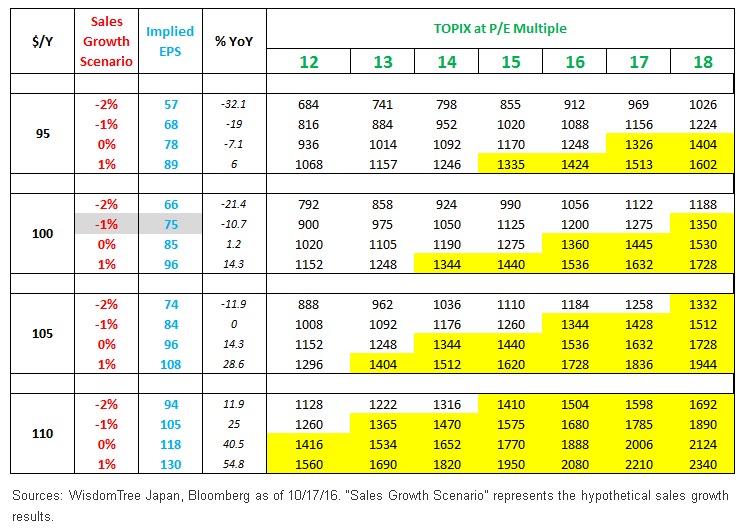Japan Earnings Reality Check

Japanese equities face a final hurdle that must be overcome for a positive breakout from the relatively tight (and lackluster) trading range overserved throughout the past six months: Consensus earnings forecasts are bound to be cut significantly in the upcoming results season (which gets going at the end of October when the technology companies report and peaks mid-November with the financials). In our view, the likely adjustment downward in analyst consensus numbers should be a positive trigger.
In Japan, the gap between top-down and bottom-up profit forecasts is typically large. That is because top-down macro forecasters’ models are driven primarily by foreign exchange (FX) and global growth. The yen’s appreciation and relentless stream of global growth revisions downward forced top-down forecasters to expect a profit drop of around 10% for the current financial year (see, for example, Bank of Japan [BOJ] TANKAN). Typically, global asset allocation decisions are driven by top-down macro modeling and the record wave of global investors cutting their Japan equity wave testifies that the negative earnings outlook has been acted upon already, in our view.
Against this, bottom-up analysts are still calling for a 27% rise in profits (see Bloomberg consensus below). It is not unusual for Japanese analysts to be behind the curve for fear of not wanting to offend management, but what matters now is that corporate managers themselves are set to revise downward their corporate targets in the upcoming results season. It is customary to do so at the halfway mark of the Japanese financial year.
The closing of the gap between realistic top-down and legacy excessive bottom-up profit estimates sets the stage for the next up cycle (i.e., earnings revision momentum turning from negative to positive). Typically, positive earnings revision momentum is a key condition for market upside momentum.
All Eyes on the Yen
The good news is that a 10% earnings drop is basically priced into the market already, and, in our view, there is plenty of possible upside from a valuation perspective. However, a key trigger is the exchange rate. Whichever way we cut it, the currency remains the single most important driver for listed companies’ earnings in Japan. Why? Japan’s listed companies are extremely global in terms of their sales and profit structure, and domestic demand is not the primary source of earnings—exports and offshore production are.
Specifically, for TOPIX companies, only 41% of recurring profits were generated onshore. Offshore production brought 31% of earnings, and exports added 28%. This is the average for the past full years .
By region, North America (the U.S., Canada, Mexico) accounted for 24% of all profits, with 10% from exports and 14% from Japanese factories in the region. China was “only” 11% of the total, with 5% from exports and 6% from local factories there. Europe is de-facto irrelevant, but non-China Asia is about as relevant as China.
In short, the single most important driver of Japanese profits is the U.S. economy business cycle—and the U.S. dollar. Here, car sales are of particular importance given that more than half of both exports and offshore production are in the car/transport and car parts industries.
The overall impact on TOPIX earnings from both the top-line sales growth cycle and the currency exchange rate is estimated in the matrix below. While this is a data-heavy table, the basic readings should be straightforward—for any given exchange rate (i.e., 95, 100, 105 and 110), you’ll find a sales growth line.
Current top-down forecasts suggest a sales drop of 1%, so we have given a drop of 2% on the downside as well as flat and plus 1% on the upside.
For the currency, Nikkei Quick estimates suggest companies are budgeting for an average exchange rate of 100, so the current consensus assumes a drop in sales of 1% and an FX rate of 100, resulting in a drop in earnings of 10.7% for the current fiscal year. Using the matrix, with the same FX rate of 100 but sales coming in flat, earnings should be basically flat (a rise of 1.2%); if FX rises to 95 and sales drop 1%, profits should fall 19%.
For the matrix, the columns on the right calculate TOPIX “fair value” at various price-to-earnings (P/E) multiples (from 12x to 18x); yellow shading indicates TOPIX upside from current levels. In our view, there is good upside potential for Japanese equities, and the upcoming results season should set the stage for the next positive breakout.



